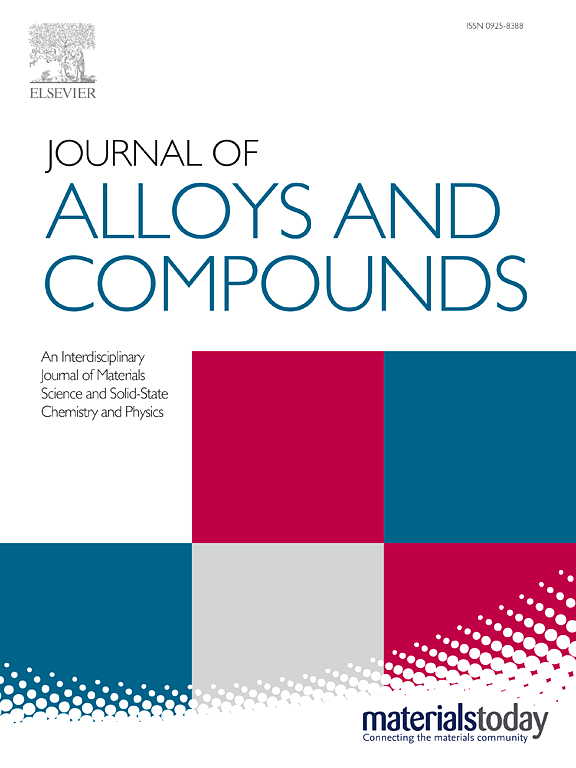Modification of the crystallinity and electroluminescence properties of Er-doped MgGa2O4 spinel nanofilms by inserting Al2O3 nanolayers
IF 5.8
2区 材料科学
Q2 CHEMISTRY, PHYSICAL
引用次数: 0
Abstract
In pursuit of better electroluminescence (EL) performance from Er-doped MgGaxAlyO4:Er (MGAO:Er) spinel nanofilms, multiple Al2O3 nanolayers are inserted into the Ga2O3/MgO/Er2O3 nanolaminates by atomic layer deposition. The Al2O3 interlayers result in a higher crystallization temperature, while the changes in lattice constant and binding energy verify the finite substitution of Ga by Al ions in spinel lattice by inserting sufficient Al2O3 nanolayers. The comparison confirms the difference in crystallization due to the intact Al2O3 nanolayers, rather than the change in inversion degree of spinel lattice, results in the different EL spectra. The EL excitation efficiency of the optimal device (4 Al2O3 nanolayers, 700 °C-annealed) reaches 4.5 %, with the maximum emission intensity of 14.5 mW cm−2. The EL devices based on MGAO:Er nanofilms annealed at 600–700 °C exhibit significantly improved operation stability, the device utilizing appropriate Al2O3 interlayers (4 layers in a ∼80 nm film) achieves the stable operation during continuous electrical injection for more than 10 days, benefiting from the quasi-crystalline structure and smooth morphology of the MGAO:Er spinel nanofilms. This work further reveals the changes in lattice crystallinity by the regulation of component and annealing temperature of oxide nanolaminates, and contributes to the silicon-based optoelectronic application of artificially designed nanofilms.

Al2O3纳米层对掺铒MgGa2O4尖晶石纳米膜结晶度及电致发光性能的影响
为了使掺铒的MgGaxAlyO4:Er (MGAO:Er)尖晶石纳米膜具有更好的电致发光(EL)性能,采用原子层沉积的方法在Ga2O3/MgO/Er2O3纳米层中插入多个Al2O3纳米层。Al2O3纳米层导致晶化温度升高,而晶格常数和结合能的变化验证了Al离子在尖晶石晶格中的有限替代作用。结果表明,导致EL光谱差异的主要原因不是尖晶石晶格反转程度的变化,而是完整的Al2O3纳米层造成的结晶差异。最优器件(4层Al2O3纳米层,700℃退火)的EL激发效率达到4.5%,最大发射强度为14.5 mW cm-2。基于MGAO:Er纳米膜的EL器件在600 ~ 700°C退火后,其运行稳定性得到了显著提高,利用适当的Al2O3中间层(约80 nm薄膜中有4层)的器件,得益于MGAO:Er尖晶石纳米膜的准晶体结构和光滑的形貌,器件在连续电注入过程中可以稳定运行10天以上。这项工作进一步揭示了氧化纳米层合物的组分和退火温度的变化对晶格结晶度的影响,并有助于人工设计纳米膜在硅基光电领域的应用。
本文章由计算机程序翻译,如有差异,请以英文原文为准。
求助全文
约1分钟内获得全文
求助全文
来源期刊

Journal of Alloys and Compounds
工程技术-材料科学:综合
CiteScore
11.10
自引率
14.50%
发文量
5146
审稿时长
67 days
期刊介绍:
The Journal of Alloys and Compounds is intended to serve as an international medium for the publication of work on solid materials comprising compounds as well as alloys. Its great strength lies in the diversity of discipline which it encompasses, drawing together results from materials science, solid-state chemistry and physics.
 求助内容:
求助内容: 应助结果提醒方式:
应助结果提醒方式:


